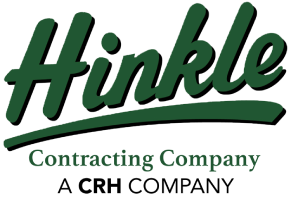A set of specific challenges arise when working underground, and a pair of 944K Hybrid Loaders and some 410E ADTs — along with an unflinching workforce — make it possible to master them.
 Winding through misty mountain roads, the stunning landscape softens to rolling hills gleaming with the vibrancy of early spring. Last night’s soft frost is losing ground in the warming sun. While most people covet the increasing hours of daylight, it’s a luxury nearly foreign to the underground miners of Hinkle Contracting Company.
Winding through misty mountain roads, the stunning landscape softens to rolling hills gleaming with the vibrancy of early spring. Last night’s soft frost is losing ground in the warming sun. While most people covet the increasing hours of daylight, it’s a luxury nearly foreign to the underground miners of Hinkle Contracting Company.
“Oh, I don’t pay it any mind,” shrugs Hinkle’s East Area Manager Donnie Spencer as he regards the lack of natural light on this jobsite. “You start your shift pretty well in the dark, spend a good 10 hours down there, and come back up about the time the sun’s setting. All in a day’s work.” Easy to say for a man with mining in his blood.
“And honestly, in the winter it’s pretty nice. It stays a constant 60 deg. and is relatively quiet, other than the machine noise. Most everyone is in a sealed cab, so the little bit of dust really isn’t even an issue. I’ve never heard any complaints about the work environment or missing the sun. Whether underground or on the surface, miners are a pretty tough breed.”
Jagged, cavernous, and colossal, the Bourbon Limestone quarry of Paris, Kentucky, looks more like the ancient ruins of a lost civilization than it does the foundation for our modern one. Even with a map, auxiliary lighting, and hieroglyphic-like markings on the walls, it’s easy for a newcomer to get turned around. But coming from a mining family and with nearly 40 years of experience, Spencer serves as a far more valuable guide.
“From where we stand, it’s 375 feet straight up to the surface, the ceiling is at 65 feet, and we have about 35 acres of open space down here.” Hinkle cuts its headings in 50-footwide slabs, leaving another 50 feet before starting the next. This creates a checkerboard-like pattern of columns that support the tremendous amount of earth overhead. “We blast three or four headings at the end of each day, and try to move most of it all out the next.” That makes for an approximate 3,000 yards or 4,000 tons of material processed per day at this location alone, contributing to the company’s yearly total of 3.6 million tons from its 16 quarry locations.
